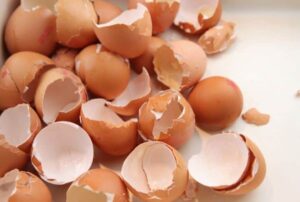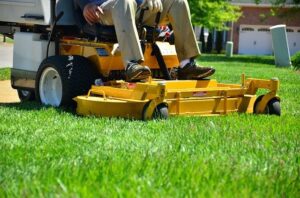10 Best Plants In Pacific Northwest (Native Plants For Home Garden)

The Pacific Northwest is home to a wide variety of native plant species, many of which are just as at home in your garden as they are in the wild. We’ve compiled a list of what we think are the best native plants for your home garden and why. Here they are, in no particular order:
Alpine Strawberry (Fragaria Vesca)
 Alpine strawberry is a beautiful herbaceous plant with white flowers – and, of course, it’s found throughout the Pacific Northwest. You’ll typically find this plant along trails, in meadows and in sparse forests. They’re a food source for deer and their edible fruit is equally popular among humans and birds.
Alpine strawberry is a beautiful herbaceous plant with white flowers – and, of course, it’s found throughout the Pacific Northwest. You’ll typically find this plant along trails, in meadows and in sparse forests. They’re a food source for deer and their edible fruit is equally popular among humans and birds.
If you have the room, plant it in an area where its runners will reach out and furnish your garden with a colony of these plants. They require a little bit of shade and moist soil to thrive. But be advised, if they don’t receive enough light, they may not bear fruit. Once you have grown enough of them, try making the fruit into a delicious homemade jam!
Lewisia (Lewisia Cotyledon)
 Lewisia is a wildflower named after Meriwether Lewis of Lewis and Clark fame. They come in a wide range of colors; the subspecies found in Oregon and Northern California are typically pink, but can also be white, orange and yellow. The plant is evergreen and is capable of blooming two to four times during the season when properly cared for. They thrive in rock gardens and can grow up to twelve inches in height.
Lewisia is a wildflower named after Meriwether Lewis of Lewis and Clark fame. They come in a wide range of colors; the subspecies found in Oregon and Northern California are typically pink, but can also be white, orange and yellow. The plant is evergreen and is capable of blooming two to four times during the season when properly cared for. They thrive in rock gardens and can grow up to twelve inches in height.
Blue Columbine (Aquilegia Caerulea)
 Blue columbine, which is also known as the Rocky Mountain columbine, can grow up to three feet in height and is the state flower of Colorado. The flowers are a bluish purple or white and they bloom during the spring and early summer. They are naturally found in meadows, woodlands and even in the high elevations of the Rocky Mountains.
Blue columbine, which is also known as the Rocky Mountain columbine, can grow up to three feet in height and is the state flower of Colorado. The flowers are a bluish purple or white and they bloom during the spring and early summer. They are naturally found in meadows, woodlands and even in the high elevations of the Rocky Mountains.
Due to their hardy nature, they can thrive in almost any type of soil (except heavy clay) as long as it is well drained. Moist soil is best and the plant can grow in full sunlight or partial shade.
(Plus, as a pruning tip, if you cut the stems in midsummer, the plant will bloom a second time!)
Broadleaf Stonecrop (Sedum Spathulifolium)
 Broadleaf Stonecrop is a great plant for groundcover due to its natural drought tolerance. It’s easy to grow and resists cold, droughts and winds with equal ease. The plant is an evergreen succulent that yields bright yellow flowers every May. While the broadleaf Stonecrop can tolerate a little shade, it generally prefers full sunlight to thrive.
Broadleaf Stonecrop is a great plant for groundcover due to its natural drought tolerance. It’s easy to grow and resists cold, droughts and winds with equal ease. The plant is an evergreen succulent that yields bright yellow flowers every May. While the broadleaf Stonecrop can tolerate a little shade, it generally prefers full sunlight to thrive.
Miniature Hollyhock (Sidalcea Hybrida)
 If you’re looking to add a dramatic flair to your garden that’s easy to grow, we recommend the miniature hollyhock. They’re a perennial that can grow up to four feet in height. At the base of the plant, the leaves are rounded and kidney shaped, but become less round the higher up the stalk you go.
If you’re looking to add a dramatic flair to your garden that’s easy to grow, we recommend the miniature hollyhock. They’re a perennial that can grow up to four feet in height. At the base of the plant, the leaves are rounded and kidney shaped, but become less round the higher up the stalk you go.
The plant thrives best in full sunlight or partial shade depending on the temperature; for instance, if it’s particularly hot, they will need protection during the sunlight during the hottest part of the day. Although full sunlight is preferred, they do prefer moist (albeit well-drained) soil and will yield beautiful red, pink, purple or white blossoms that can be trimmed throughout the summer to encourage consistent summer flowering.
Tufted Hairgrass (Deschampsia Cespitosa)
 If you’re looking for an ornamental grass, look no further than the tufted Hairgrass. This grass is dark green in color and grows cloudy tufts of flower panicles during the summer, which can often last into the early winter. They grow best in average to moist, well drained soils and require either partial or full sun.
If you’re looking for an ornamental grass, look no further than the tufted Hairgrass. This grass is dark green in color and grows cloudy tufts of flower panicles during the summer, which can often last into the early winter. They grow best in average to moist, well drained soils and require either partial or full sun.
Blanket Flower (Gaillardia Aristata) This plant is a relative of the sunflower family and can produce their distinctive red and yellow flowers all summer long. Growing up to two feet in height, this plant has been historically used by Native Americans to treat wounds and fevers. It is a favorite flower of butterflies and they even tend to thrive in poorer soils. They will require at least a few hours of direct sunlight each day and can continue blooming into early fall.
This plant is a relative of the sunflower family and can produce their distinctive red and yellow flowers all summer long. Growing up to two feet in height, this plant has been historically used by Native Americans to treat wounds and fevers. It is a favorite flower of butterflies and they even tend to thrive in poorer soils. They will require at least a few hours of direct sunlight each day and can continue blooming into early fall.
Satin Flower (Sisyrinchium Striatum)
 Satin Flower resembles an iris in its appearance, bearing pale yellow flowers and growing up to two feet high. The spiky leaves are greenish-gray in appearance and evergreen; the flowers, which have a striking purple stripe on the back of each petal, appear through June and July. This particular flower needs light shade or full sun and can actually spread and become somewhat invasive if not properly controlled. Take care to remove old flower clusters.
Satin Flower resembles an iris in its appearance, bearing pale yellow flowers and growing up to two feet high. The spiky leaves are greenish-gray in appearance and evergreen; the flowers, which have a striking purple stripe on the back of each petal, appear through June and July. This particular flower needs light shade or full sun and can actually spread and become somewhat invasive if not properly controlled. Take care to remove old flower clusters.
Camass (Camassia Leichtlinii)
 This is a strong perennial that is notable for its spikes of purple, star shaped flowers that bloom during the spring, typically between April and May. The plant grows to four feet in height and requires minimal maintenance, thriving in clay soil as well as dry and wet soil. Plant this one in full sunlight or partial shade for best results.
This is a strong perennial that is notable for its spikes of purple, star shaped flowers that bloom during the spring, typically between April and May. The plant grows to four feet in height and requires minimal maintenance, thriving in clay soil as well as dry and wet soil. Plant this one in full sunlight or partial shade for best results.
Pacific Bleeding Heart (Dicentra Formosa) Pacific Bleeding heart blooms all the way from mid spring through fall, yielding clusters of pink or purple heart shaped flowers. Preferring partial shade and moist, well-drained soil, this plant grows to about one foot in height is excellent for attracting hummingbirds to your garden.
Pacific Bleeding heart blooms all the way from mid spring through fall, yielding clusters of pink or purple heart shaped flowers. Preferring partial shade and moist, well-drained soil, this plant grows to about one foot in height is excellent for attracting hummingbirds to your garden.






